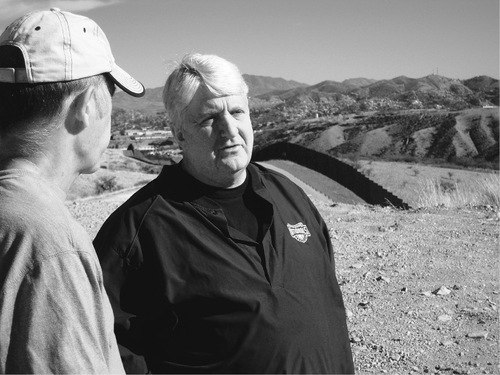This is an archived article that was published on sltrib.com in 2010, and information in the article may be outdated. It is provided only for personal research purposes and may not be reprinted.
Washington • Border patrol agents stationed in an Arizona federal monument say they must routinely wait several months to move an unmanned surveillance tower in environmentally sensitive areas, a delay that hampers their ability to crack down on border crossers.
At one point, the agents based at Organ Pipe Cactus National Monument had to wait four months to move cameras to an area of high traffic, limiting their ability to detect undocumented immigrants along a seven-mile stretch of the border. By the time they moved it, the traffic had shifted to another area.
That's according to a draft of a Government Accountability Office report requested by Rep. Rob Bishop, who, as the top Republican on a House Natural Resources subcommittee overseeing federal lands, has made it his mission to draw attention to what he says is a major problem in national security.
The report, which has not yet been finalized or made public, says, in essence, that Border Patrol station chiefs have found environmental laws inhibit their ability to move quickly to catch undocumented immigrants but that, overall, the ruggedness and remoteness of the federal swaths is the most difficult challenge they face.
Bishop said the report illustrates the gravity of the situation along the border and documents problems where federal land managers are impeding border agents.
"Inaction can no longer be tolerated," he said. "If federal environmental regulations continue to prevent the Border Patrol from routinely patrolling crime-ridden federal lands, we will never have full operational control of the border and the crime and violence we are seeing now will continue to escalate. It is unacceptable that traffickers and smugglers have virtually unmitigated access into the U.S. via federal lands."
Bishop's office provided the draft report despite a warning on its cover noting that recipients of the report must not, "under any circumstances," show or release it. The report had been circulated for the agencies to respond and is not yet final.
The Border Patrol has 41 stations along the southwest border and 26 include protected federal land.
Most agents-in-charge said rocky mountains, deep canyons and dense brush were the biggest hindrance to security.
Of the four stations that did report environmental laws were a bureaucratic roadblock, the agents-in-charge there either did not press their concern further up the command chain or did so and were stymied by higher-level officials who said there were other priorities.
Interior spokeswoman Kendra Barkoff and Homeland Security spokesman Matthew Chandler said their departments are working together to address any concerns.
"The report points out many of the positive steps that have been taken to increase collaboration with [Homeland Security] and the U.S. Forest Service, and we look forward to continuing to work with those agencies as we address the challenges along the southwest border," Barkoff said. "We will also diligently work to implement the GAO's recommendations for how we can further strengthen our programs and collaborations."
The draft GAO report recommends, among other things, that the secretaries of Homeland Security, Interior and Agriculture find ways to speed up environmental assessments.
Bishop is pushing legislation — that is now included in the GOP's action plan if the party takes control of the House come January — that would give Border Patrol broad authority to disregard environmental laws in the effort to protect the U.S. border.
Border issues
Among the GAO's findings:
More than half the 26 Border Patrol stations told investigators they've hit delays and restrictions when trying to access portions of federal land. At the same time, 22 of the 26 said their ability to protect the border has not been affected.
Five stations said agents had to change their patrols because endangered species were present in the area.
In Organ Pipe, Border Patrol was denied its ideal location to place a surveillance tower, and the eventual location now leaves a three-mile area unprotected.
In San Bernadino National Wildlife Refuge in Arizona, Border Patrol's vehicle use is limited by the endangered Yaqui chub fish and administrative roads have been gated and locked.



